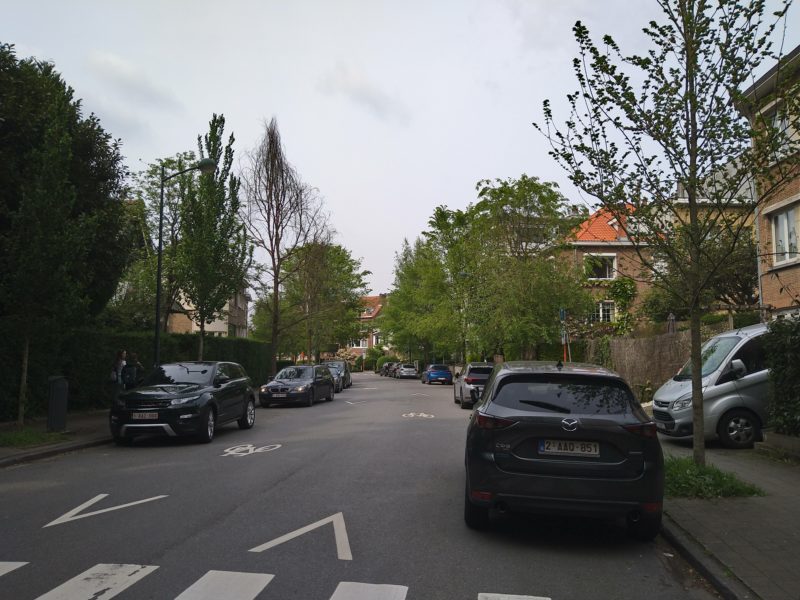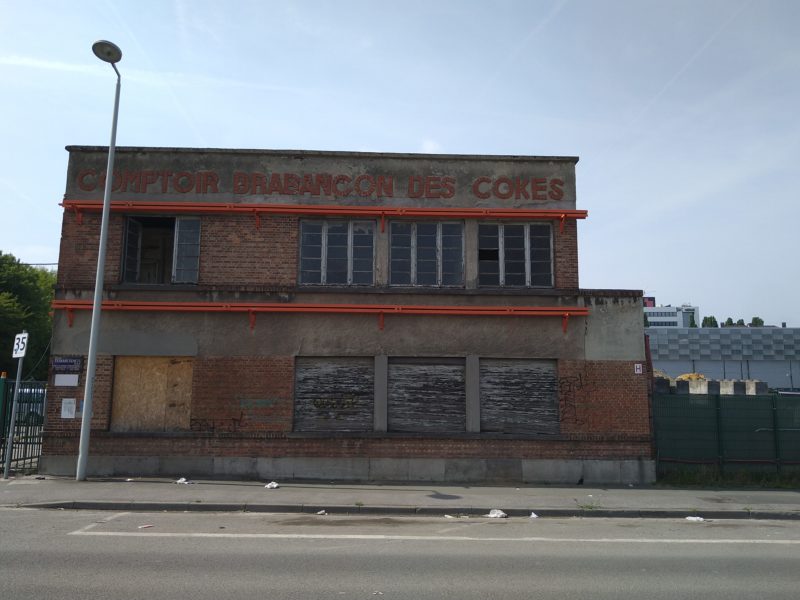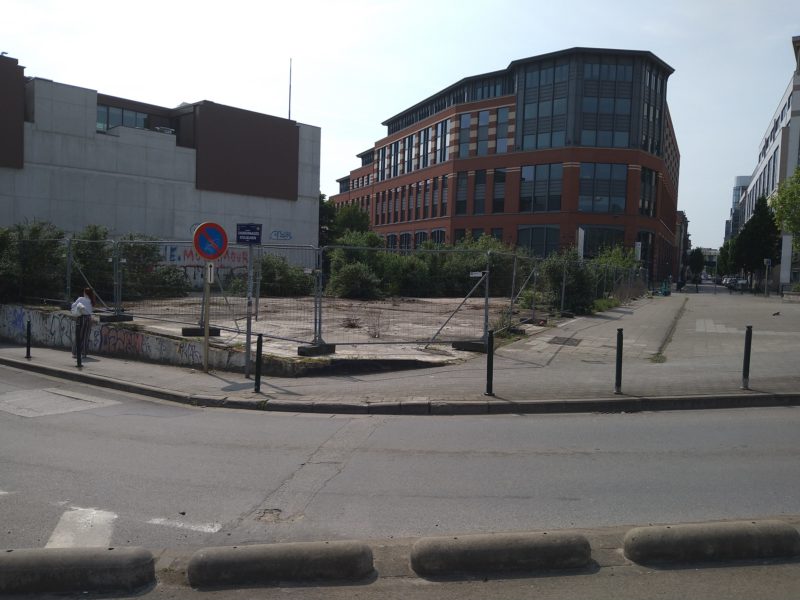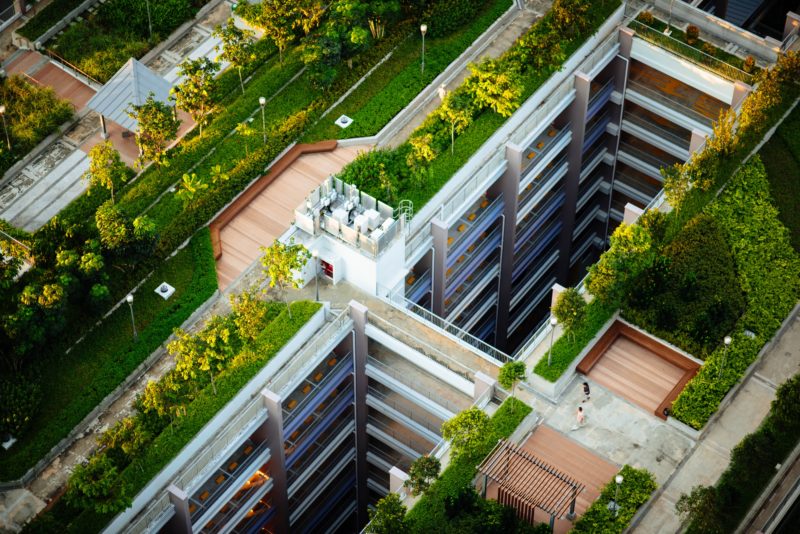Climate change is now an undeniable reality, and its devastating impacts on natural ecosystems are indisputable. From disrupted animal habitats to invasive species and extreme weather events, the consequences of climate change are increasingly evident: Examples of this damage includes the disruption of ideal living conditions for animal species, the reduced ability of certain species to reproduce, and the presence of invasive species that destroy flora and fauna that guarantee the correct functioning of many ecosystems.

Moreover, urban areas, often overlooked in
discussions about climate change, are not immune to its effects. The rise in temperatures has transformed some cities with little vegetation into heat islands. By storing and amplifying heat from the sun and other sources, these so called “heat islands” are endangering public health and increasing mortality rates (during 2022, heatwaves in Europe were responsible for at least 20,000 deaths). Periods of heat and drought are often followed by heavy rain, and the improper absorption of heavy rainfall due to impermeable surfaces (roads, parking spaces, etc.) prevent the correct reabsorption of said water.
All this takes place in a context in which green space is increasingly commodified and associated with status, as “leafy suburbs” are considered a marker of prosperity, whereas poverty is frequently characterised by urban spaces dominated by impermeable surfaces with very little greenery.
In this context, a separate issue is the problem of food deserts within urban areas (i.e. areas within cities with limited or no access to nutritious food options). As such, the frequent lack of alternatives to a poor supply chain condemns certain neighbourhoods and citizens to unhealthy food.
A positive development could be the use of flora for carbon sequestration. Improving the livability of cities within the context of a changing climate has garnered greater attention as a potential solution, with a particular emphasis on the pivotal role of urban parks.

These elements are often approached separately, resulting in ecosystem services such as carbon sequestration being seen as most relevant to rural areas. Reinforcing natural ecosystems in urban areas in the way to generate them is rarely discussed.
This is hampered by the prevailing tendency in urban design, using construction of infrastructure that involves “soil sealing” under impermeable surfaces such as tarmac or concrete.
This process eliminates biodiversity by reducing plant cover and preventing soil from carrying out its ecosystem services, such as sequestering carbon and retaining water.
Policy Objectives:
The main goal of this policy proposal is to reestablish a harmonious relationship between natural and urban environments, moving away from their current isolation.
Several specific objectives contribute to this overarching aim:
- Increase carbon sequestration within urban areas.
- Reduce impermeable surfaces and combat the heat island effect.
- Prepare urban areas for extreme weather events.
- Promote citizen involvement in the management of urban green spaces.
- Combine carbon sequestration with increased local food production inside urban areas.
The policy proposal aims to obtain a greater combination of carbon sequestration, microclimate stabilization, and food production in urban areas. By reducing impermeable surfaces and addressing the heat island effect, the initiative seeks to pave the way for a more resilient urban landscape.
Furthermore, this proposal acknowledges the importance of democratizing access to green spaces, ensuring that all citizens can participate in their creation, utilization and maintenance. By implementing this proposal, cities and their residents can actively contribute to addressing climate-related challenges rather than being passive victims of them.
While the proposal seeks to enhance the integration of urban agriculture with green space, it is not intended to compete with large-scale conventional agriculture. Instead, the policy proposal will prioritize poly- and permaculture, both of which align with reinforcing ecosystems and improving biodiversity in urban areas. Simultaneously, it aims to foster better access to healthy food for underprivileged areas and citizens.
Democratizing the accessibility and oversight of green space is key to ensure they are not confined to affluent areas. Citizens who are concerned about these changes should have a direct voice in the development of these green spaces, and actively engage in their use and maintenance.
As a result, citizens can not only enjoy the benefits of these green spaces, but also embrace the responsibilities that come with them, thereby having the opportunity to take ownership of their environment.
Moreover, this policy proposal presents an opportunity to implement the concept of ecosystem services while also advancing the democratization of green spaces in cities. By doing so, cities and citizens can actively contribute to tackling climate-related challenges, rather than merely exacerbating, and succumbing to them.
This shouldn’t be looked at as merely a means of increasing the number of gardens in cities, it should be regarded as an invitation for modern cities to embrace their identity as integral parts of nature.”
Over the course of 10-20 years, the policy proposal aims to achieve a meaningful reintegration of human spaces with nature. Throughout history, as humanity transitioned into a sedentary species, and especially during the industrial revolution, there has been a growing tendency to exclude nature from human spaces. Unfortunately, this has resulted in a gradual detachment of humans from the natural world, rather than fostering a harmonious integration of human structures within the broader natural environment.
Examples of existing policies that aim to provide a framework for addressing related issues, such as soil degradation and the increasing imbalances in land use to the detriment of natural spaces can be found in the endnotes of this paper.
Challenges:
The proposal must overcome several challenges that are inherent to urban environments. One major challenge involves determining costs, as different cities have diverse climates and terrains, making it difficult to provide generic pricing for the proposal’s implementation. Additionally, different plants also require different levels of maintenance, which entails considerable investment in expertise and materials. Varying soil conditions and the presence of industrial pollution may require extensive and time-consuming decontamination entailing high costs.
Furthermore, navigating relationships with local communities and authorities is crucial. Public engagement and support are essential for the success of the proposal, but existing conflicts or distrust between certain segments of society and authorities may hinder progress.
The proposal’s potential impact on commercial food producers due to the urban agriculture element may also raise concerns, necessitating clear communication about the initiative’s objectives, which are not meant to compete with large-scale agriculture but rather to provide nutritious food to underserved communities. The structure of land ownership in urban areas must also be carefully reviewed to avoid proposals being blocked since in cities with a large proportion of private land ownership resistance could be greater resulting in a smaller workable area.
Another concern could be mobility within cities and the need to guarantee both individual mobility and supply chains. As such an initiative would mean a considerable reduction in impermeable surfaces in and around urban areas, this could result in initial difficulties for traffic flows. It is therefore necessary to evaluate what transport options are available and how supplies reach businesses in these cities to avoid disruption that could generate opposition to the proposal.

Solutions on the horizon
To address the challenges, the policy proposal outlines several stages, building on successful restoration projects.
Identifying suitable sites (I.e., strategic areas such as riverbanks, obsolete infrastructure, etc.), involving verified experts in each city and engaging citizens and local authorities will pave the way for successful implementation: Biologists or botanists must be consulted to determine the appropriate flora to survive in the area in question. That would help to understand which plants are more likely to thrive during the initial phase of their life and seamlessly integrate into the ecosystem shaped by the area’s unique climate and topography.
Once feasible areas have been identified, it is imperative to engage in consultations with citizens, local authorities and experts to establish a consensus for this proposal. Subsequently, the focus shifts to determining the viability of providing essential guidance to interested citizens, enabling them to actively participate in the maintenance of these green spaces.
If the above criteria is fulfilled, local authorities, experts and citizens can deliberate on the nature and timing of works to implement these environmental changes. Lastly, the stakeholders can then develop the necessary bodies charged with managing the ecosystem and training citizens to take care of it.
Learning from past restauration projects, like the Cheonggyecheon river restoration in Seoul, South Korea, as well as the renaturation (process of restoring an ecosystem to its original state) projects concerning the section of the Manzanares river that passes through Madrid, can offer valuable insights into best practices:
The Cheonggyecheon river restoration has certain flaws that should not be repeated, such as a concrete riverbed which stops natural purification of the water. Nevertheless, it has succeeded in encouraging the return of biodiversity to the area and lowering the surrounding temperature by as much as 5ºC. The renaturation of the Manzanares river has not only allowed the river to resume natural flows and sedimentation processes (and therefore a partial restoration of the native ecosystem), but also allowed for better management of extreme temperatures as well as rare but violent flood events.
In practice: the Brussels Capital Region
As an illustrative example, the Brussels Capital Region showcases potential applications of the policy proposal. With an unequal distribution of green space and high percentages of impermeable surface in certain areas, this region can benefit from targeted efforts to address environmental disparities:
The Western flank of the Brussels Capital Region exhibits dense population concentrations, accompanied by higher levels of economic hardship and a significant proportion of impermeable surfaces.
Given this context, directing attention towards plants that occupy minimal space but actively contribute to reducing impermeable surfaces can serve as a starting point to address the inequality in coverage. This approach would enable these areas to benefit from the advantages offered by essential ecosystem services.
Despite the challenges posed by high building and population density, the presence of abandoned structures further compounds the issues in Brussels. These structures frequently remain vacant for extended periods, posing risks to both people and the environment.

Abandoned buildings that do not receive the necessary repairs and reconversion could be dismantled to create more green spaces and/or communal gardens for local food production.
This would allow the terrain to resume a productive purpose while contributing to supporting biodiversity, reducing the area’s impermeable surfaces, and delivering ecosystem services.

Moreover, reviving the Senne river and the Brussels-Charleroi canal presents opportunities to restore natural flows and interactions with living ecosystems in the city center, thereby increasing resilience to climate change: As the canal within Brussels is no longer necessary for large-scale economic activity, an attempt can be made to identify sections of the Senne river that can be restored above ground, and sections of the canal that can be renatured to improve the area’s adaptability to a changing climate.


Conclusion
In conclusion, the proposed policy seeks to achieve a transformative paradigm shift in how we approach urban planning and climate change mitigation. By integrating urban areas with nature, fostering community involvement, and promoting sustainable agriculture, cities can become more resilient and livable in the face of climate change.
humanity’s ongoing concentration in cities is set to continue hence urban spaces urgently need to be made more resilient to climate change to remain livable otherwise more people could suffer severe harm. It is crucial to remember that the cost of inaction will be far greater than the investment required for implementing resilience measures.
As urbanization continues, the urgency to reconnect cities with nature grows stronger. The proposed policy aims to create cities that understand themselves as part of nature, not apart from it.
Addressing the climate crisis entails addressing the inequitable access to green space and their ecosystem services within cities, while also striving to reintegrate citizens with nature and empowering them as stakeholders in its well-being and maintenance.
Implementing such measures can also foster contemplation on food production and consumption, presenting an opportunity for a fraction of city residents’ fruit or vegetable intake to originate within the urban areas, consequently bridging the gap for populations excluded by high retail prices and providing them with access to fresh produce.
These measures should build upon prior expansions of urban green space and nature restoration, acting as a catalyst for a transformative paradigm shift. They must signal the end of piecemeal approaches aimed at reducing human artificialization of ecosystems, while incepting a unified movement to seamlessly integrate urban spaces with nature and reintroduce humanity to the natural world.
As with all other measures associated to climate change, though the cost of action may seem high, the cost of inaction will be catastrophic.
We would like to thank the author, Luca Contrino, for his contribution and participation at the United Europe Mentoring Program (Class 2022/23).




